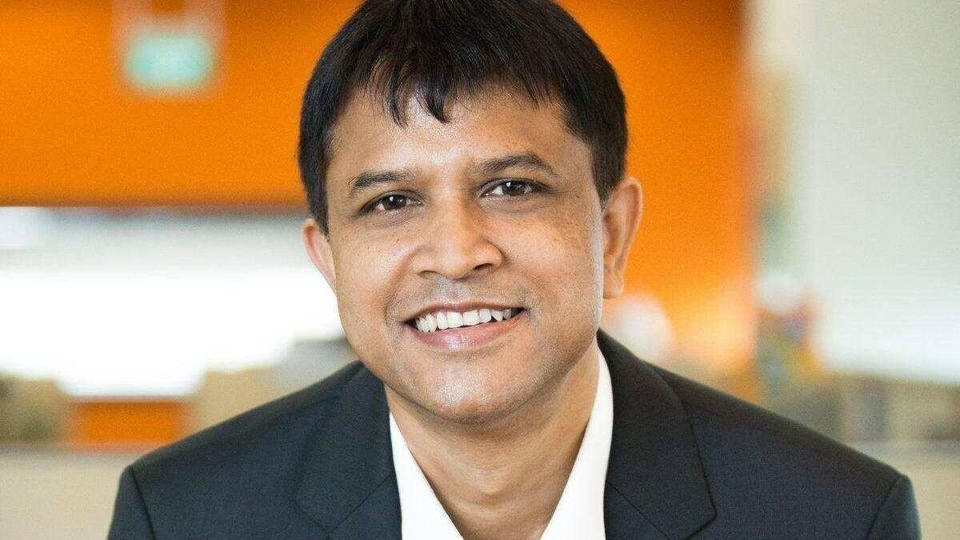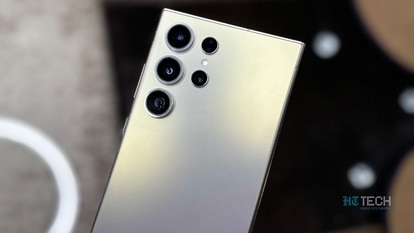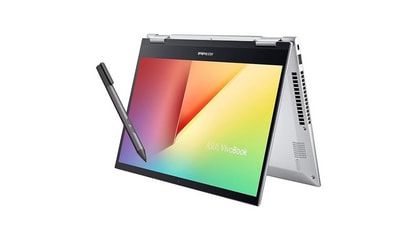Future is about moving, storing and processing data faster, says Intel India’s Prakash Mallya
Intel India's Prakash Mallya chatted with HT Tech and told us all about how Intel dealt with 2020 and how 2021 is looking for them. Read on…

The year 2020 has been an interesting one for all, particularly for tech companies across the world. From dealing with the pandemic to gearing up to face the challenges and looking forward for bigger and more focussed developments on the tech front so as the world can remain connected and online - the work for most them has just begun.
We spoke to Prakash Mallya, VP and MD, Sales, Marketing and Communications Group, Intel India, to understand how it has been for Intel and what they are looking forward to in 2021.
Here are some excerpts from our chat:
What are some of the key technology trends that have accelerated through the pandemic and how do you see those unlocking the potential of emerging technologies such as AI and automation?
In terms of key technology trends, the first thing I see happen, and it's apparent for all of us, is the evolution of cloud. There has been significant acceleration of cloud during the pandemic. It also means that digital transformation as it relates to companies looking at ways and means to be resilient to all the shocks that they can potentially receive in pandemic times or beyond becomes important. So, you see that trend getting fast-tracked and greater cloudification is also democratizing technologies like AI and IoT.
The second is the fact that education or work could happen out of wherever you are based was a notion that was in the consciousness of all of us, but it never came alive before the pandemic. So, I really think it has significant implications on how work evolves in the future. It has significant implications on how education evolves in the future. It also has implications on the role India can play in the digital transformation of global organisations because a lot of the service delivery firms are headquartered out of India, so it is a significant opportunity for us.
The third trend is that when you look at the ecosystem, I would think all countries would build for resilience moving forward so that it is not only efficiency on lowest costs that is considered. You will then see the diversity of the ecosystem come alive in India as well as in all countries globally. So, large to small companies, start-ups to significantly large corporate houses, all of us together will shape the journey for the country. The diversity and the variety of the ecosystem is going to go further up.
The last point which embeds itself into all the three trends that I have talked about - acceleration of cloud and digital transformation, the transformation of how we work, how we live, and the diversity of the ecosystem - is the localization of infrastructure. You have seen that happen in the recent past with Aadhar or GST, digital payments as an example, but it will definitely build momentum. Simply because you will see many more vertical industry specific platforms, national digital platforms as an example for health, for agriculture, would come about and they would ride on top of the digital rails already setup by the Government of India to really get healthcare into the smaller cities, or education and high-quality education pervasive across the country. Those are, I feel, the four trends that can shape the country in dramatically positive ways.
Now, where does AI and automation fit in here?
I think it would be all pervasive, across all of these, and here's why. When we turn back the dial about five to seven years, we did see a lot of data coming in. The research suggests that 2-4% of the data available to companies is analysed and this percentage of analysed data has not changed, pre-Covid to post-Covid, because a lot still needs to be done to analyse that data.
What are the reasons for that? The reasons could be silos of data, could be the technology that is used for storage of data does not interact very well with each other, or it could just be too expensive to collect the data and store it because there is so much coming in with social media and unstructured data, as an example. Those are the places where we see an opportunity to create impact for the industry.
How is Intel positioned to enable the acceleration of these trends?
We defined our vision towards building technology innovations within the company that can help us move, store and process data faster. And I will explain how it has come about in terms of automation and AI, specifically. When you look at the processing part, the biggest realization across the industry is that one size does not fit all workloads. So, you would need a CPU, you would need a GPU, you would need accelerators like FPGAs. You would need accelerators like Movidius on the edge. Or you would need several other such combinations to really do a very good job on analyzing every kind of workload that would be thrown at the infrastructure. And our portfolio of products, it cuts across all of these components.
The second part of moving data faster are the avenues where we have invested in the network. Specifically, in technologies like ethernet, technologies like 5G, which moves data on the network way faster. And the aspect of movement becomes more and more critical because with only so much of data analyzed and so much more coming in, historically the notion was that you could analyze all the data on the cloud. It is physically impossible in my opinion to do that in an effective manner. That's why we believe more and more analytics and AI would happen at the edge or at the place where the data is getting created.
That is the reason why Movidius becomes a very interesting edge AI solution that people could use in computer vision; people could use inference across a variety of verticals. The movement of the data as it relates to the network also is that if you horizontalise the technologies that are embedded underneath the network, it will move from fixed function to open standards. That means, the network is really scalable and can take much more data. So, there is a lot of investment going in from our side as well as the industry in making 5G happen on open standards-based platforms because then it becomes truly scalable.
The last part is storing more data. If you look at history, micro processing has gone really fast in the last 30-40 years. But storage as a technology has not really been hit by Moore's law. So, it has never really innovated at the pace of microprocessors. That's where, for the last ten years we have been working on technologies like Optane Persistent Memory, which enables larger datasets to exist closer to the CPU for faster processing which mean greater insights. You can then analyze, you can make in-memory analytics happen in far more affordable or inexpensive terms vs using just a DRAM. So, it really helps you reimagine the data center infrastructure needed in the new world order.
Those are the three pieces of our strategy to impact, in a transformational way, areas like automation and AI. The last bit I will mention, in that whole envelope of technologies that we are building on, is software. When you look at the platforms that I talked about, Movidius, Xeon or FPGAs, all of these are different architectures. So, developers and partners who are building these solutions will have more and more of a hard time because they need to build for different architectures.
How do we simplify that?
Hence the exercise of building tools like OpenVINO becomes very interesting. OpenVINO is visual inference at the edge and when you help developers with tools like OpenVINO, they can actually make the algorithms happen once, as in build it once, and run across the variety of different architectures. They don't need to build it differently for different architectures. So, it really simplifies their work.
And then we convert that back into the training we do. For example, we have done programs like building very short courses on OpenVINO kind of platforms on Udacity and making it available to a global set of partners and customers across the world. And then you actually do developer cloud, which means they have access to a DevCloud where using their laptop, they can build an algorithm, test that algorithm on the DevCloud and then go implement across the variety of architectures that I talked about based on need. And then you continue down that path of creating those use cases across verticals and enabling customers and partners globally to help them become successful. So, that is our story on the path that we have been on for the last five to 10 years.
How does this translate in India? The kind of initiatives you are undertaking to really help customers and partners take benefits of this technology?
Firstly, India is a very large facility for us. It's the largest design center outside of the US and it has a variety of skills, whether it is SOCs, AI, overall network and as it relates to data center, client, IoT, you name it. There are skills pervasive across different business units located in India and it reiterates or underlines the capability or talent that exists in this country so that we can actually bring to bear all the projects and innovation that India is thinking about.
The second part is how do we enable our customers, partners, and ecosystem and what I call - raise all boats. Those are areas like, how do we engage with the government. For example, the applied AI research center in Hyderabad that we announced very recently in collaboration with the government and academia. It is an initiative to apply AI to population scale problems in the Indian context, with a focus on identifying and solving challenges in the healthcare and smart mobility segments through strong ecosystem collaboration. Or the work we do with CBSE in 'AI for Youth' initiatives, where we have trained 100,000 youth in AI-readiness skills. That is again skill building and raising all boats.
When the pandemic hit, we were collectively challenged by the quality of education being available to everyone. We then collaborated with CareerLauncher and AWS under Project Aspiration 2020, where we could deliver high quality education to government school kids in Delhi and we have 165,000 students already getting high quality education in their homes because of that initiative. So, we are very proud of these aspects that really help the country progress.
The last part would be, we continuously engage with the government and the broader ecosystem on projects, initiatives, including policy. So, areas like data privacy, data security are where we can collectively get to a state where the country can leverage data and also progress in terms of usage models and verticals getting impacted out of those usage models.
In the last nine months we have seen a significant uptick in technologies like automation and AI. A recent AI and Future of Work survey conducted by Intel India and Indian School of Business (ISB) found that over 90% respondents considered AI to be essential or highly relevant to their business and at least 70% of respondents indicated the growth of all firm-level initiatives to support AI adoption. According to an IDC forecast, India's AI spending will grow from $300.7 million in 2019 to $880.5 million in 2023 at a CAGR of 30.8%.
The verticals are - “How do I create better user experience in financial services?”, “How do I create contactless experiences in manufacturing?”.
Emerging areas are healthcare where people are thinking how they can deliver this in a constrained space where we don't have that many doctors that we really need to get to smaller towns. This is where the edge technologies that I talked about become important as well. Intel's unmatched capabilities in embedding intelligence in the cloud, network, edge and every kind of computing device, have never been more vital.
What were the initial steps that a company like yours took to ensure continuity during the pandemic? If we talk about March, April, and May, the first three months of the pandemic when lockdown was at its peak. And how did you ensure you continued to extend meaningful support to the ecosystem, your customers and collaborators through it all?
We all recognise technology to be crucial to progress. However, not many imagined what technology could enable in a world where you could not go to the office. Here's an example. Across the world, we always did our partner events face to face. We would choose one place; we would get our customers into those locations and stay for a couple of days at these events. We could not do that in pandemic times, so, we converted the whole infrastructure to online and the feedback across all the events that we did for our customers and partners, the participation was much higher, the feedback was stellar. We collectively re-imagined what was possible with technology and though people had it in the back of their minds, they never thought of the extent to which it could go.
Like many organisations, Intel had remote work capability in place for many years. However, the pandemic led to almost our entire workforce, including contingent workers and ecosystem collaborators, having to shift to working remotely overnight. We made numerous changes across our site operations, human resources, finance, sales and marketing, and supply chain to successfully pivot our workforce while safely continuing business operations. We simplified workflows and added new capabilities to support remote working, fine-tuning multiple platforms to help employees seamlessly collaborate, contribute and continue to learn.
The second part of this was also realising that while technology became more important, not everybody was in a position to adopt, internalise and take advantage of it to the best possible extent. One example was education moving online. Not everybody had the infrastructure and even if they had the infrastructure, they were not savvy in using it.
So, one of the efforts we made was an industry-wide initiative called PC Paathshala, where we brought together our OEM customers, educational technology leaders, and retailers with the singular purpose of helping improve learning outcomes in an online environment for parents, teachers and students. Because it was a tough time and not everybody knew how to deal with the situation of online being the only mode of learning. It has given us fantastic learnings from all of our collaborators as well as teachers, parents and students who engaged on this. That's one example of a need we assessed and responded to.
Intel technology has also been enabling ecosystem initiatives towards tracking, diagnosis, and drug and vaccine discovery for Covid-19. In India, we have been working with CSIR and IIIT - Hyderabad to help achieve faster and less expensive Covid-19 testing and coronavirus genome sequencing to understand epidemiology and AI-based risk stratification for patients with comorbidities. Intel India was also part of the NASSCOM Covid-19 taskforce for developing a population-scale, technology-driven pandemic response platform for India. Globally, our $50 million pandemic response technology initiative accelerated access to technology to combat the pandemic and prepare for future crises.
Our purpose of creating world-changing technology that enriches the lives of every person on earth is more important today than ever before. Our purpose drives the impact we look to create in society and the communities we live in. And these are the places where we need sustained effort and energy, collectively, across the industry, to solve the bigger problems that the nation or the world faces today and in the future.
From the time this pandemic started, which are the industries besides obviously the IT industry that were able to rise to the challenge the fastest?
The obvious one and we would agree to that is the delivery services. Think about all our start-ups to all our e-commerce platforms. The first few weeks of lockdown where nothing was available except those essential items that we could get delivered, what could we have done if those platforms did not exist? So, they did a phenomenal job in delivering food, delivering amenities, sometimes even the infrastructure where it was needed and all of us chipped in. The industry actually supported the cause of giving them the platforms and supply chain in those initial few weeks was very challenging to deal with. But once it stabilized, I think these platforms helped us deliver to different parts of the country, which was really magical to me. So, ecommerce retail and the new age retail has really surprised me.
The second part, and if you see the trending on that, as it relates to automation that we are talking about, digital payments - one of the reasons why I think the platforms like those delivering services for food or retail were successful is because digital payments were so seamless. And there is a massive opportunity to grow in terms of digital payment transactions in the country.
The third, looking back at everything that the healthcare industries, the start-ups to large companies, the mid-sized companies all of them combined have been able to do on healthcare consultations remotely, delivery of services remotely, the drug research. All of it has been stunning because we have got high 90s efficacy drugs being rolled out. Not one, not two, but three or four across the world in 9 months. When has that ever happened? A lot of that research and now access is also accelerated by innovations in automation and AI.
How do you see 2021 shaping up and how are you guys gearing up for it?
I think those four trends that I talked about are the trends that I am personally watching. I feel cloud adoption and digital transformation will continue to accelerate. People will find ways to make their companies and businesses very resilient and we have an opportunity there to help customers and partners through tools like Automation and AI to make that happen. Definitely on the cloud, but not only on the cloud because stuff would happen right at the edge as well.
The other part that is interesting when you look at digital transformation and cloud and automation increasing, is the as-a-service model. I definitely see the as-a-service model – I see it in education, I see that in healthcare, I see that in financial services. You would see that model, now that people have tasted that in some verticals, globally as well as in India, given that affordability could be a yardstick or a consideration for all parts of the world including India, you could have different solutions getting serviced by different verticals. Sometimes new age companies or sometimes incumbents.
The second part is the PC, we continue to see very significant opportunities. Up until now people perhaps did not truly understand the differentiated value of the PC vs a smaller screen device like a phone. When the pandemic hit, majority of the people realised that you could consume on the phone, but it is very hard to learn on the phone, it is very hard to create on the phone, it is very hard to collaborate on the phone.
So, I see education, I see working from anywhere, I see the gig economy, all of those with the right infrastructure - including a PC, delivering the best outcomes for people - being the most productive they can be. So, the surge in PC relevance is a huge opportunity.
The third part is when you look at the ecosystem diversity, that's where, as a company, we have always believed in collaborating with small and large companies combined. So, the work I mentioned around developer specific engagements, on AI tools or software tools, and training them; working with the government and academia on efforts like Plugin, which is a collaborative accelerator program for hardware and systems software startups. Those are the places which will really increase the breadth, large and small companies all combined, towards making it better. We see that in 2021 as a targeted set of engagements we would continue to do.
Lastly, localised infrastructure will also get a significant uplift. You would see local data centers - you already have several companies announcing their data center plans. You would have global cloud providers and some of them have already announced their data center cloud service provider-oriented plans for India. This will only accelerate as data privacy, data localisation norms get set and we have an environment where data would get leveraged across the ecosystem and in a low latency environment whether you can deliver a service, that will be your differentiator. I see that momentum pickup as well in 2021 and beyond.
Catch all the Latest Tech News, Mobile News, Laptop News, Gaming news, Wearables News , How To News, also keep up with us on Whatsapp channel,Twitter, Facebook, Google News, and Instagram. For our latest videos, subscribe to our YouTube channel.


























